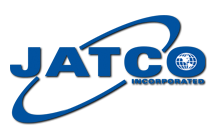When choosing a plastic injection molding company in California, it’s crucial to understand the different mold classes available to meet your specific production needs. The Society of the Plastics Industry (SPI) has established a classification system to help manufacturers select the most appropriate mold for their projects.
Here’s a breakdown of the different mold classes:
Class 101: Precision Molds
Volume: Over 1,000,000 parts
Uses: Parts demanding the highest precision, tolerances, and surface finishes.
Cost: Significant investment due to the use of premium materials and advanced manufacturing techniques.
Class 102: High-Precision Molds
Volume: 500,000 to 1,000,000 parts
Uses: Parts requiring precision, but not quite the level of Class 101 molds.
Cost: Lower than Class 101 molds, but still a substantial investment.
Class 103: Standard Molds
Volume: Up to 500,000 parts
Uses: Parts with standard tolerances and less intricate designs.
Cost: A more economical option compared to higher-class molds.
Class 104: Commercial Molds
Volume: Up to 100,000 parts
Uses: Parts with less complex designs or intended for commercial applications.
Cost: A cost-effective choice for lower-volume production.
Class 105: Prototype Molds
Volume: Up to 500 parts
Uses: Prototypes for market introduction.
Cost: The most affordable option among steel molds.
By understanding the nuances of these mold classes, you can make informed decisions about your plastic injection molding projects and ensure that your products meet the highest quality standards. Need assistance selecting the right mold class for your project? Contact us today for a plastics manufacturing consultation with our experienced team. We service all of the U.S. west coast including Washington, Oregon, California, Nevada and Utah.


